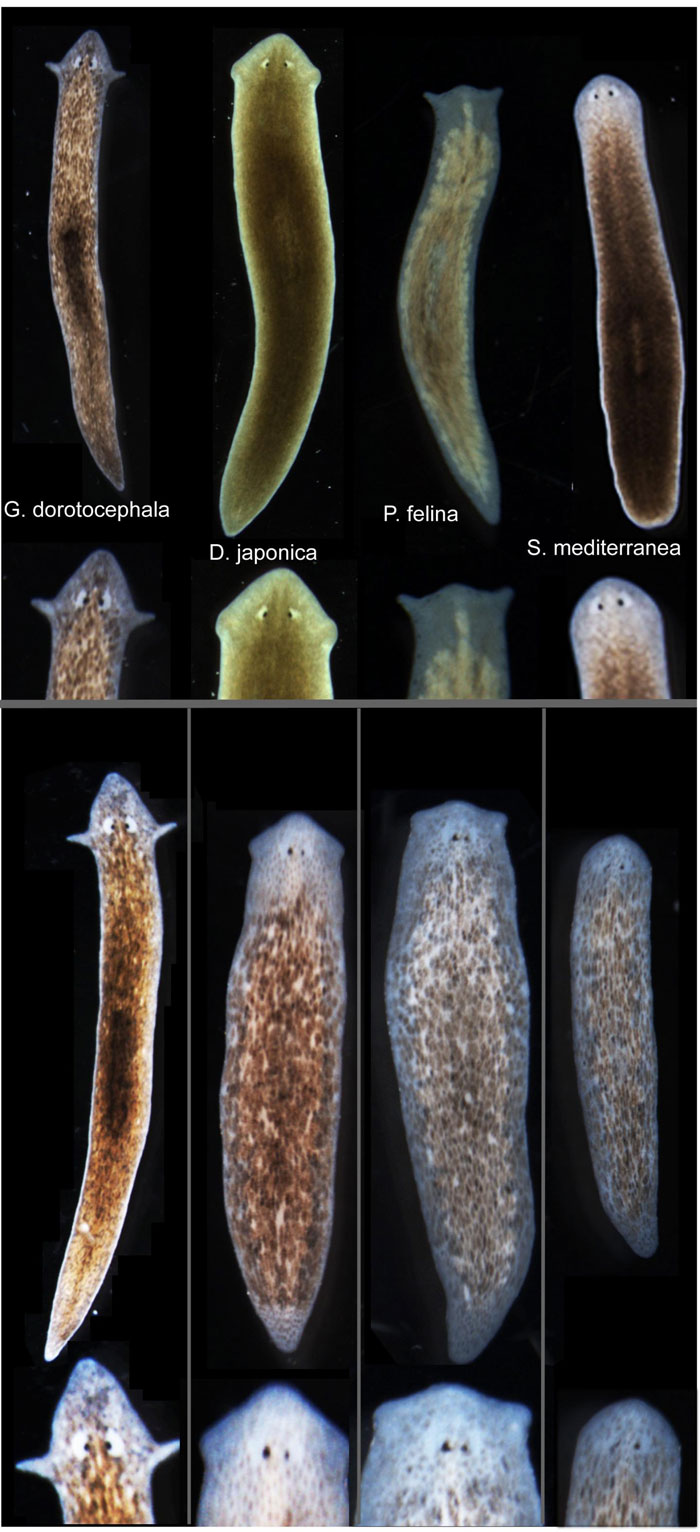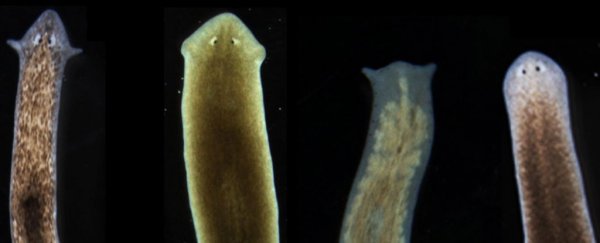Many of us are aware that the information contained in the genome is effectively a huge set of instructions for how to build and maintain an organism's body, but scientists also know that external factors can help shape how we come to be.
In further proof of this, scientists in the US have succeeded in literally swapping out the head of one species of flatworm and replacing it with the heads and brains of other flatworm species – and all without altering the worm's genomic sequence.
Instead, biologists at Tufts University induced the head-swap by manipulating electrical synapses in the body, which shows that internal physiological connections are themselves a kind of epigenetic factor capable of determining large-scale anatomy.
"It is commonly thought that the sequence and structure of chromatin – material that makes up chromosomes – determine the shape of an organism, but these results show that the function of physiological networks can override the species-specific default anatomy," said one of team, Michael Levin. "By modulating the connectivity of cells via electrical synapses, we were able to derive head morphology and brain patterning belonging to a completely different species from an animal with a normal genome."
 Tufts biologists induced one species of flatworm – G. dorotocephala, top left – to grow heads and brains characteristic of other species of flatworm, top row, without altering genomic sequence. Examples of the outcomes can be seen in the bottom row of the image. Credit: Centre for Regenerative and Developmental Biology, School of Arts and Sciences, Tufts University.
Tufts biologists induced one species of flatworm – G. dorotocephala, top left – to grow heads and brains characteristic of other species of flatworm, top row, without altering genomic sequence. Examples of the outcomes can be seen in the bottom row of the image. Credit: Centre for Regenerative and Developmental Biology, School of Arts and Sciences, Tufts University.
The worms selected for this heady experiment were Girardia dorotocephala, a species of planarian flatworm, which are known for their extraordinary regenerative capacity. The researchers induced the species to grow the head and brain shapes of other flatworm species by interrupting gap junctions – the protein channels through which cells communicate via electrical signals.
The findings, which are published in the International Journal of Molecular Sciences, will have a big impact on our understanding of how physiological functions can determine and influence body shape, which could one day help us to remedy things like birth defects or induce new biological structures to grow after injuries.
"This kind of information will be crucial for advances in regenerative medicine, as well as a better understanding of evolutionary biology," said Maya Emmons-Bell, a student researcher who worked on the project.
Interestingly, the ease with which the biologists could make G. dorotocephala develop alternate species' heads was linked to how closely related the species was to the target species on the evolutionary timeline.
Even more amazingly, the head changes weren't permanent. Perhaps due to the flatworm's inherent regeneration abilities – although the researchers don't know for sure – the worms began to reacquire their original head morphology weeks after completing the original transformation. The biologists intend to study how this reversion takes place in subsequent research.
For more information on epigenetic inheritance, read this story and check out this video:

